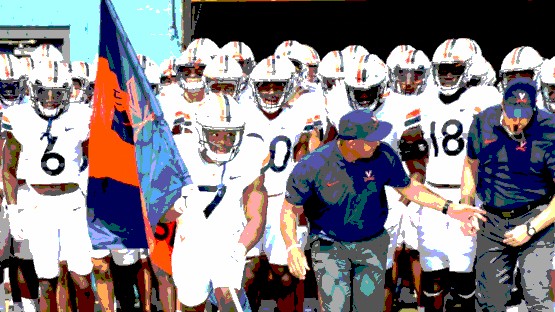
Kurt Angle is saying what a lot of us are thinking about modern pro wrestling, that it’s “more of a spot fest” than anything resembling an actual competition.
“They go out there and do these impressive things, a couple flips over the top rope onto the floor, you know? Things that don’t tell a story, you know? Psychology is the most important thing in wrestling, and you want to have great psychology and a good storyline,” Angle said in a recent interview with SHAK Wrestling (hat tip to Wrestling Inc. for the transcription).
Good psychology would involve moves and holds that look like they might do damage. Angle, remember, came to pro wrestling after winning an Olympic gold medal as an amateur wrestler in 1996. He’s among those you could consider to be most qualified to weigh in on these matters.
“There are a lot of moves that don’t really hurt,” Angle said. “I mean the most popular finish of all time, the Stone Cold Stunner, it doesn’t knock you out. Honestly, there are a lot of moves that if you’re a real fighter, a real MMA fighter, and you’ve never watched pro wrestling and you start watching it, you’re going to go, what the hell is this?
“I’ll give you an example. When the heel gets the babyface down, the heels get heat on the face, makes a comeback, starts fighting, making a comeback, and then he stops, runs the other way, hits the ropes, and comes back to the heel. Why would you run away from the heel when you’re beating him up already? So, there are a lot of things in pro wrestling that if you’re a real MMA fighter and you never saw pro wrestling, you’re not going to understand. You’re going to think it’s stupid.”
You could throw in so much more that comes across as stupid. For instance, any of the various maneuvers involving a wrestler doing a moonsault. Moonsaults look impressive, but turning your back on your opponent and expecting them to still be there when you land, particularly when they’re standing upright, and could simply move to the left or right to avoid you, is plain dumb.
Most dives through or over the ropes to the floor, same. Again, the opponent could just move out of the way.
Obvious cooperation spots like those make a match less simulated competition and more choreographed performance.
Angle brings up another example.
“A spot where somebody is running ropes and someone leapfrogs,” Angle said. “Why would you, if you leapfrog somebody, somebody steps over, you’re going to stop and catch them and slam them. But there are things in pro wrestling when I first started, I didn’t understand. I was like, that makes no sense.
“I don’t understand why they would do a leapfrog or, if you tackled somebody and you got him down, and then the guy hits the ropes, and it allows you to get back up again. I didn’t understand that. It just didn’t make any sense to me,” Angle said.
And we’re not even scratching the surface with stuff that goes on outside the ring to set up matches. Attacks by one wrestler or faction on another that go on endlessly would be criminal, as would the various kidnappings and damage done to personal vehicles.
It would help if we just got things back to basics.
“A good story is babyface versus heel,” Angle said. “The babyface shines on the heel, the heel sells, the heel cheats, gets the babyface face down, gets heat on the heel, or the heel gets heat on the babyface. The babyface makes a big comeback, you have the false finishes, and then the finish.
“If you have that certain psychology in wrestling, you’re going to get it right every time as long as you do that. But a lot of these matches now, there’s no baby and no heel. It’s just two athletes going at it, and I think that’s where we lost a little bit of our psychology.”
Story by Chris Graham










